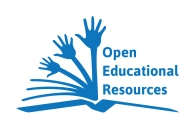In many places around the world, the costs associated with investments in educational technologies are perceived to be prohibitive (and often higher than one may initially calculate). That said, there are few places where such investments are not under active consideration.
On this blog, I have criticized
"the often singleminded focus, even obsession, on the retail price of ICT devices alone, which is in many ways a distraction from more fundamental discussions of the uses of educational technologies to meet a wide variety of educational goals in ways that are relevant, appropriate and cost-effective."
I have also wondered,
"What are the costs of not investing in ICT use in education? Can we afford them?"
Reasonable people can and will disagree about what the associated costs are for ICT/education initiatives — as well as how to calculate them, and what these costs might/should be, relative to other potential uses of scarce funds (teacher and administrative salaries, books, school infrastructure, health and feeding programs for students, etc.)
Reasonable people can also disagree on what the impact to date of such investments has been — a frequent topic here on this blog.
But let’s leave aside such discussions and debate for now.
As part of engagements in various countries, I sometimes propose the following ‘thought experiment’ to provoke policymakers to take a step back (or two — or five!) and think more broadly about why they are looking to introduce ICTs in their schools. As part of this process, I present the following scenario:
Let’s assume that, by 2025, *all* hardware and software costs related to the use of information and communication technologies to support learning were zero.
How might this change the way you consider the use of ICTs to support the goals of your education system?
If we removed considerations of cost from the equation, how might we conceive of the use of technologies in education? Would our approach then be consistent with our approach today?
Now let’s be clear:
- It is a truth pretty much universally acknowledged that hardware costs will continue to fall. In addition, the rise of free and open source software, the new low-cost app economy and the open education resources (OER) movement has meant that, in many cases the applications (and the content that is sometimes bundled with them) are in many cases falling in price as well.
That said,
- Hardware and software costs aren’t going to be near zero any time soon.
- Even as prices continue to fall — and, for the sake of the sake of our scenario here, even as they approach zero — poor communities (and poor countries) will still have much greater difficulty meeting such costs.
And of course:
- Hardware and software costs aren’t the only costs incurred in these sorts of investments (and may not even be the largest component costs). That said, such costs are pretty easy to understand and calculate, and are in my experience the two costs that many policymakers (rightly or wrongly) consider most important.
With those caveats in place,
Can we learn anything from a thought experiment of this sort?
—
So much of the current planning around the use of educational technologies is concerned with what is happening and what is possible *today*, and the perceived future needs of industry and society related to the use of such current technologies (e.g. "we need to teach kids how to use computers").
I once had a 15 minute conversation with an education minister about ‘appropriate’ processor speeds (back when many users still talked about such things regularly) for school computers. I was impressed by his knowledge of the subject … while lamenting that 15 minutes of valuable time in our 30-minute meeting was spent discussing this sort of minutiae.
Innovations in the technology sector will almost surely mean that many ICT tools we use now, or are considering using, will become more powerful (and potentially more interconnected), and that there will be new sets of tools available to use five and ten years down the road in the education sector that we haven’t even conceived of today. In some cases these may only subtly change the ways things are done, in other cases the potential for change may be more radical.
Given the high likelihood of continued (potentially quite disruptive) innovation in this area, both on the technology and the cost side, sometimes it might be useful to be clear aboutfirst principles.
When I speak with many policymakers about their vision for education in 2025 as it relates to the use of technology, what I often hear is a description of new sets of gadgets and cool electronic things in schools. Every child with her own computing device, classrooms walls transforming into interactive touch displays, eyeglasses transformed into personal data projection devices, videoconferences with holograms and on-demand printing of objects in 3D: These sorts of visions are important to contemplate, especially where they may help challenge our conceptions (and preconceptions) of what it possible — or even likely. But in the end they resemble more of a wish-list of items that can be purchased to rebuild and reimagine the architecture of a school or classroom than a vision for what students should be learning, and how, and how others can support them in this process.
If costs weren’t an issue, what would you be seeking to do with technology to support learning? Would this change your perspective on the role of ICTs from what it is now?
Answers to these sorts questions — or even the process of trying to answer them — might help provide some clarity and direction for our more immediate and ‘pressing’ policy challenges related to the appropriate and cost-effective use of a variety of information and communication technologies in the education sector.
Note: The public domain image used at the top of this blog post ("thinking big thoughts") comes via Wikimedia Commons.
Courtesy: http://blogs.worldbank.org/edutech/thought-experiment
Filed under: Article of the Week, elearning, ICT in education
























































